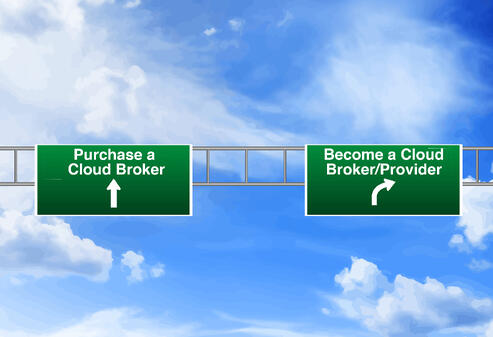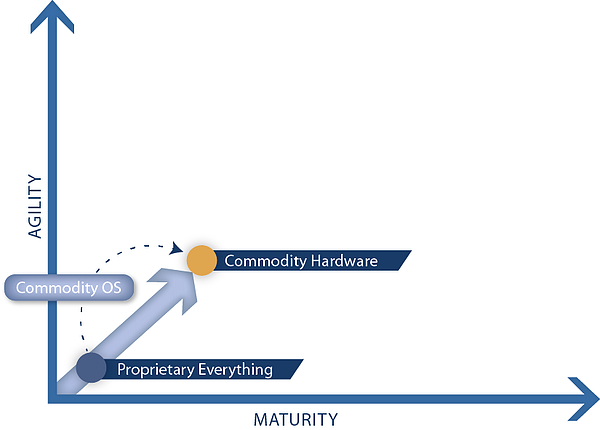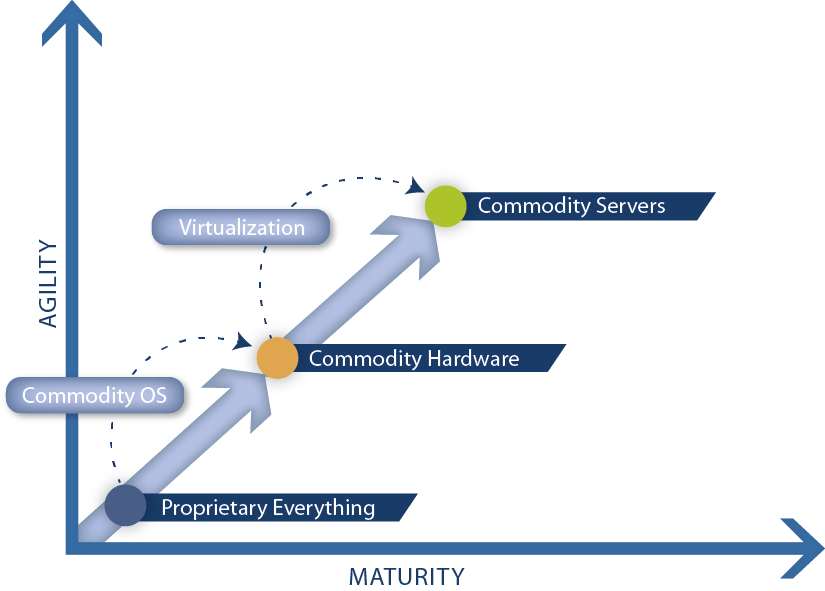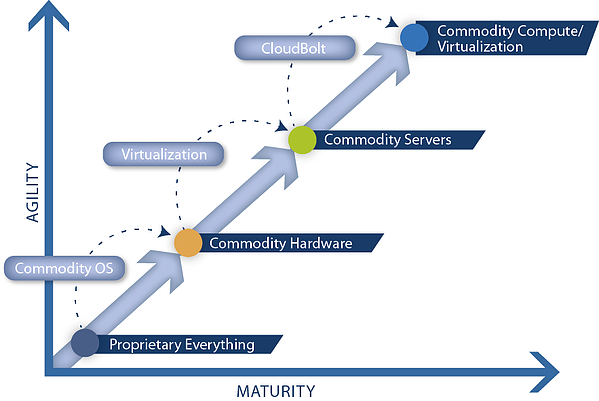With Cloud Managers assuming such a critical role for IT groups, it is easy to understand why every existing IT vendor wants to supply a Cloud Manager that favors their core products in the roll out of an enterprise private/hybrid Cloud.

Where does your Cloud Manager fit amonngst the available choices?
The Gartner Group has studied private/hybrid cloud management extensively and has summarized the space as having five (5) categories of vendors with ‘solutions’ for Cloud Management, as described by Gartner in their research note titled “Cloud Management Platform Vendor Landscape” Published 5 September 2012:
1) Traditional IT Operations Management Vendors
This segment of the Cloud Manager market includes vendors whose primary focus for management has been targeted at traditional physical and virtual infrastructures. (BMC, HP SW, IBM, CA and others)
2) Infrastructure Stack Vendors
In this segment of the Cloud Management market are providers of the virtual infrastructure resources (Citrix Systems [Citrix], Microsoft, Oracle, Red Hat and VMware) —the hypervisor and basic virtualization management. While some of these vendors offer some multiplatform (hypervisor or OS) capability, their expertise and deep integration are for their own platforms.
3) Fabric Based Infrastructure Vendors
Most hardware infrastructure vendors offer cloud management software, which enables them to sell private and hybrid cloud solutions and not just the features and benefits of their hardware. (HP, IBM, Cisco, etc.). Think wholly contained racks of equipment that include storage, compute, network, and software, sold in pre-integrated chunks.
4) Open Source
These projects or vendors provide an open-source-based abstraction layer for resource management. They provide basic CMP functionality and generally provide a northbound API so that other vendors/independent software vendors (ISVs) can develop and build enriched CMP capabilities.
5) Best-of-Breed Point Solutions Vendors
The point solution Cloud Management vendors, which include mostly smaller Cloud Management companies, potentially are able to introduce innovation to the market. This is primarily because these vendors don't have legacy products that have to be integrated to build their solution.
Examining these categories some concerns about vendor motivations and the resulting limits placed on customers adopting some of these solutions arise.
The first three categories of vendors have a clear mission to maintain and advance the dependency that IT organizations have on their core technology. A primary reason for adopting Cloud Management is enabling flexibility for future IT choices, yet selection of a Cloud Management solution from vendors in categories 1 through 3 have effect of restricting choice and flexibility for the customer due to biased technology support.
In order to gain full functionality from the offering, all the vendors in these three categories mandate use of a suite of software and/or hardware from the vendors’ own portfolio. These requirements will hamper the organization that adopts a Cloud Management solution. Rather than being free over time to adopt new technologies like Network Virtualization, IT organizations will be limited to continuing to feed their ‘Cloud Management” vendor large sums of the IT budget for software and hardware, ensuring they are now ‘locked-in” as a result of a biased Cloud Management approach. These large vendors have a term for what they are trying to achieve with the customer. It’s ‘share of wallet’. Any vendor looking for more share of your wallet is not going to make it easy or flexible for your enterprise to adopt products or technologies that they do not provide.
Gartner views the fourth category (open source) with promise noting: These solutions “provide basic Cloud Management functionality and generally provide a northbound API so that other vendors/independent software vendors (ISVs) can develop and build enriched CMP capabilities.”
The options in this category are tools like OpenStack, CloudStack and Eucalyptus. The level of immaturity of the technologies in this space are the reason Gartner sees the need for an API so other more refined and mature Cloud Managers can abstract the users from these specific tools. By avoiding direct use of the cloud frameworks’ UI, the organization can use a more complete Cloud Manager to integrate the Cloud pilots undertaken with Open Source tools using only a broader cloud approach by the overall enterprise.
The additional concern with respect to these open source frameworks is that they are developed as a monolithic technology stack and bring unique technology such as server virtualization and configuration management. Rather than being truly vendor and technology agnostic, they represent a considerable integration effort and encourage costly rip and replace.
So that leaves only one category of Cloud Management vendor that doesn’t approach the IT organizations’ problem as an opportunity to ‘lock-in’ the customer, or is not too immature to deliver organizational value today.
The “Point Solutions” category is one where real unbiased solutions will be able to emerge. Like CloudBolt, other vendors in this category must deliver value in their own right. The products must account for heterogeneous resources in an IT environment and must stand on their own when considered as a solution.
The range of vendors offering independent solutions for cloud management is extensive and the solutions are diverse. From products limited to organizations using only virtualization to full-on enterprise offerings like CloudBolt Command & Control (C2) that cohesively manage and coordinate hardware provisioning, virtual servers, virtual networking, configuration and automation (HPSA, Chef, Puppet, etc.).
I am sure I speak for all the point solutions vendors when I suggest that; “selection of a Cloud Management solution must be made with eyes wide open with respect to each vendors’ desired outcome. Increased “Share of Wallet” is not a technical objective. Only when your Cloud Management vendor is fully aligned with your organizations will you be able to deliver to the enterprise the desired technical and business flexibility.”
Want to learn more about CloudBolt C2? Download our Product Overview!








 John Mackay at the top of Mt. Superior in the Wasatch range, Utah.
John Mackay at the top of Mt. Superior in the Wasatch range, Utah.

